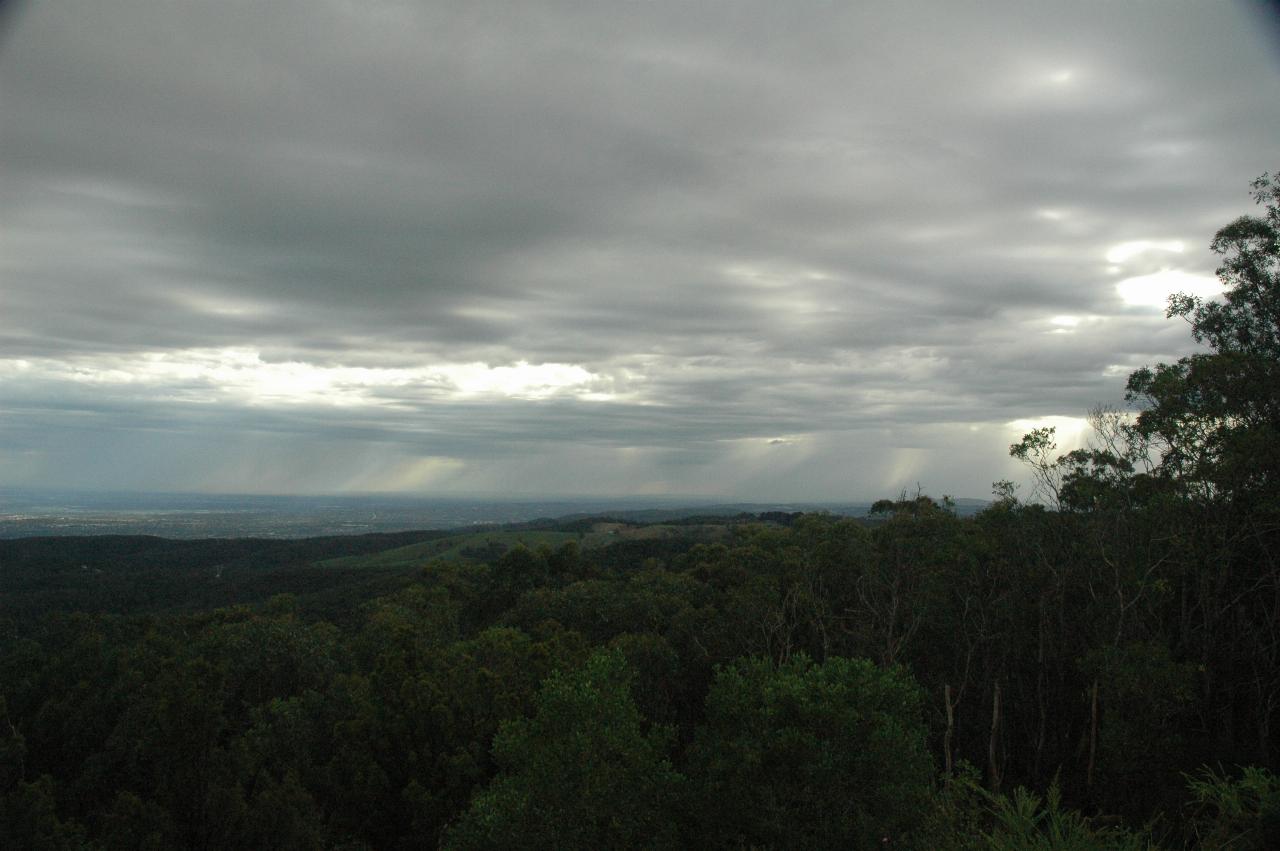
Monday morning started with a bit of wet ground, and "rain in the area". Supposed to clear up later in the day. The idea was to visit Mt. Lofty, then off to Hahndorf and finish at Goolwa, where the Murray River ends in a large, shallow lake before emptying into the Southern Ocean.
The motel where I was staying is on Portrush Road, which made for easy access to Greenhill Road and on to Mt. Lofty.

It was definitely a "rain in the area" sort of day. Fortunately, none of it was at Mt Lofty, although the wind certainly was!
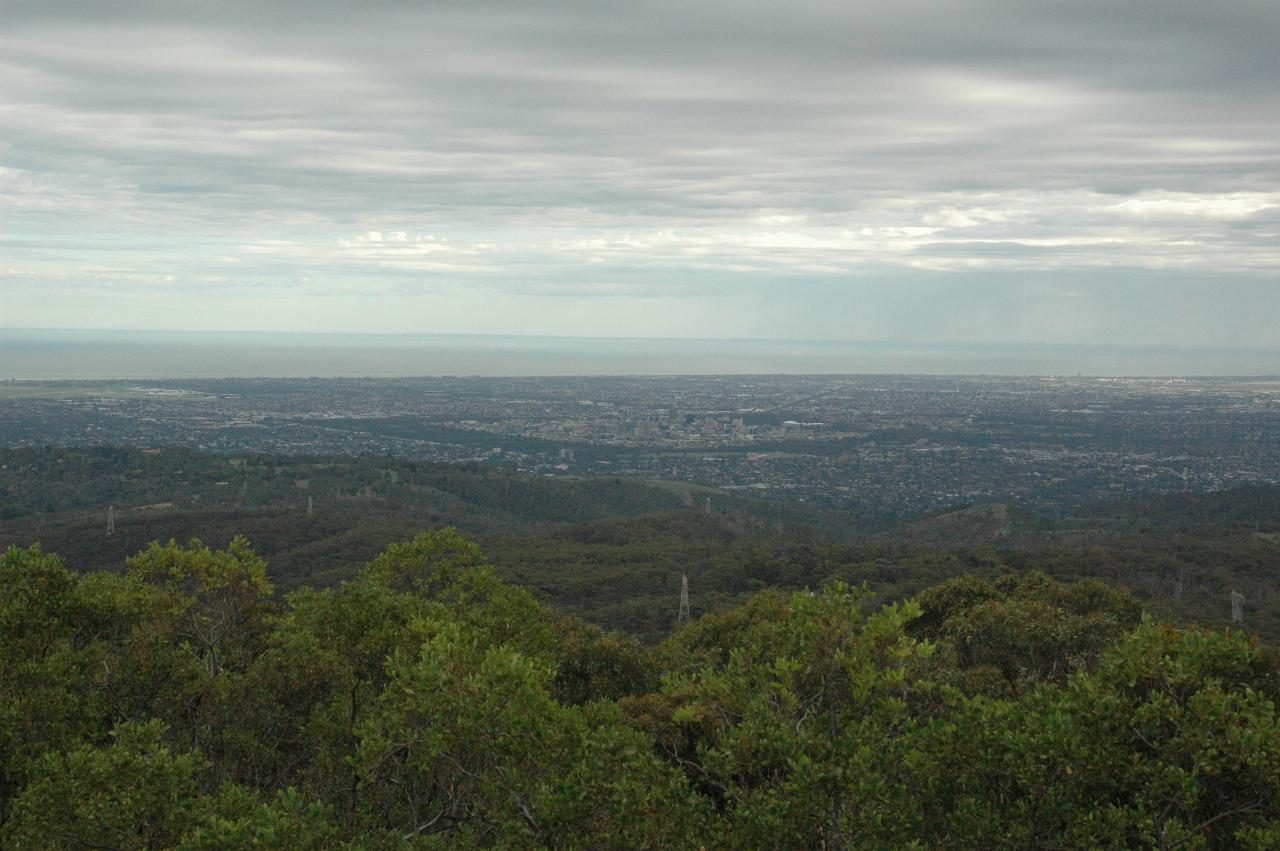
Mount Lofty at 727 metres is the highest point in the Mount Lofty Ranges. It is located about 15 km SE of the centre of the city of Adelaide, with panoramic views of the city and the Adelaide plains to the NE, and of the Piccadilly Valley to the east.
The first European to climb it was explorer Collet Barker in April 1831, almost seven years before Adelaide was settled. It was named by Matthew Flinders on 23 March 1802 during his circumnavigation of Australia.
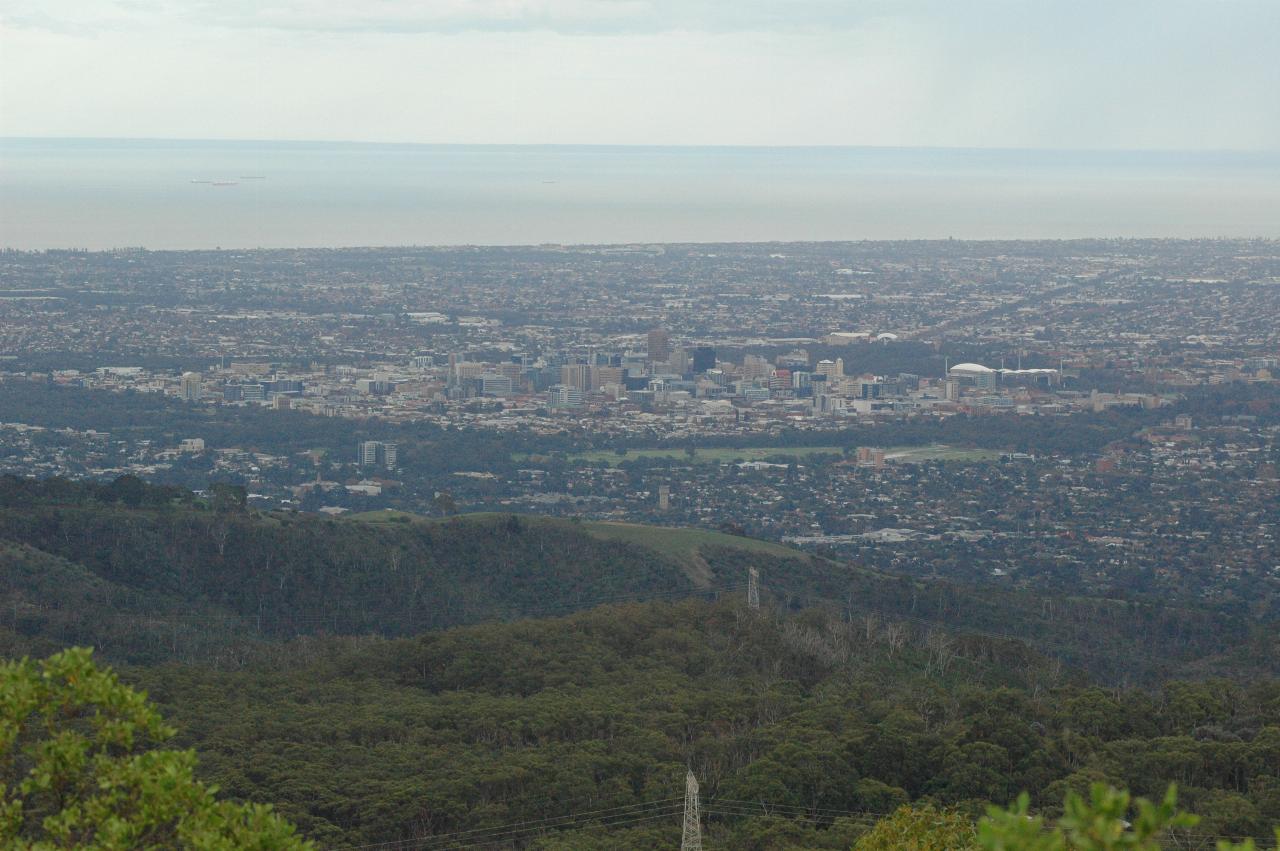
The Adelaide CBD is surrounded by parklands of a substantial width.
The parks are surrounded by suburbia, reaching to the Gulf of St. Vincent.
The white roof of the new Adelaide Oval is just visible on the right side.

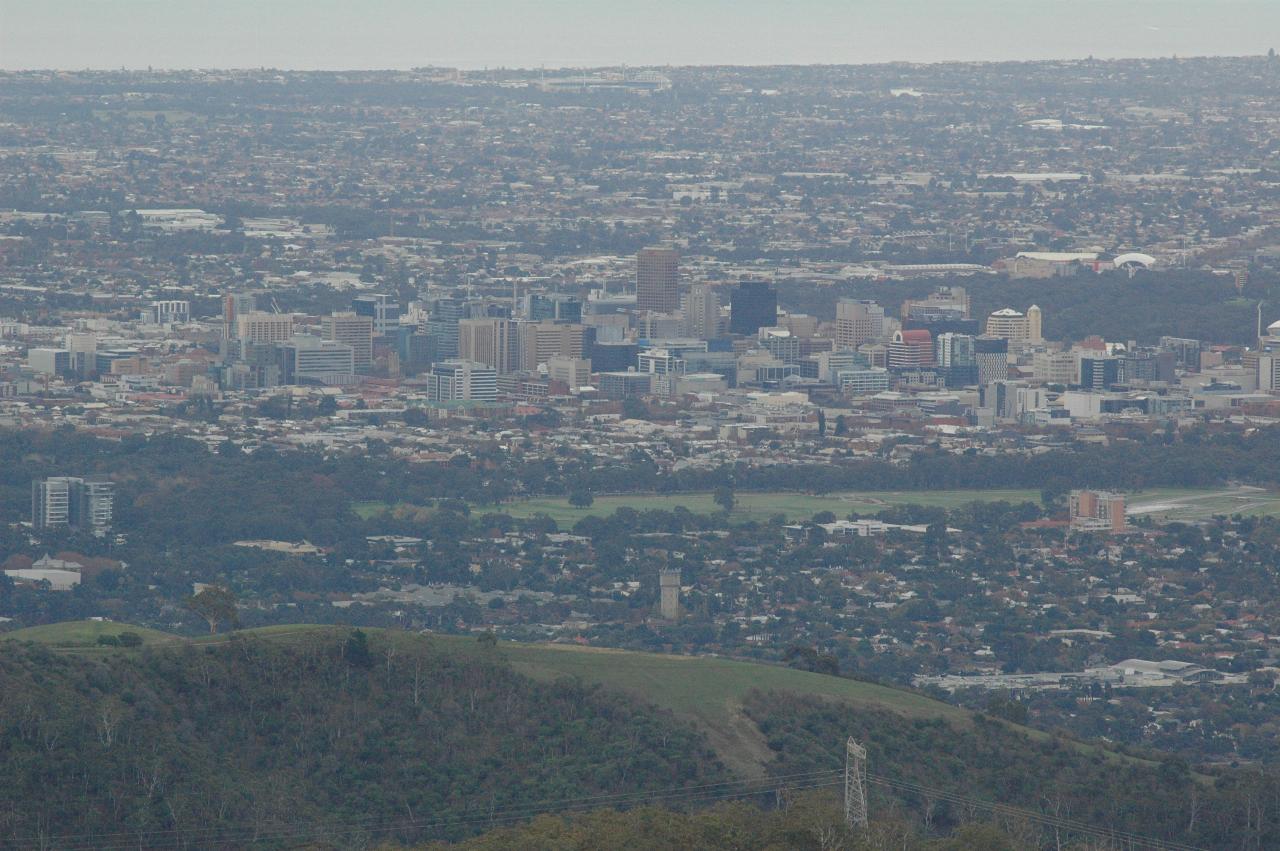
A closer view of Adelaide's CBD, better showing the parklands.
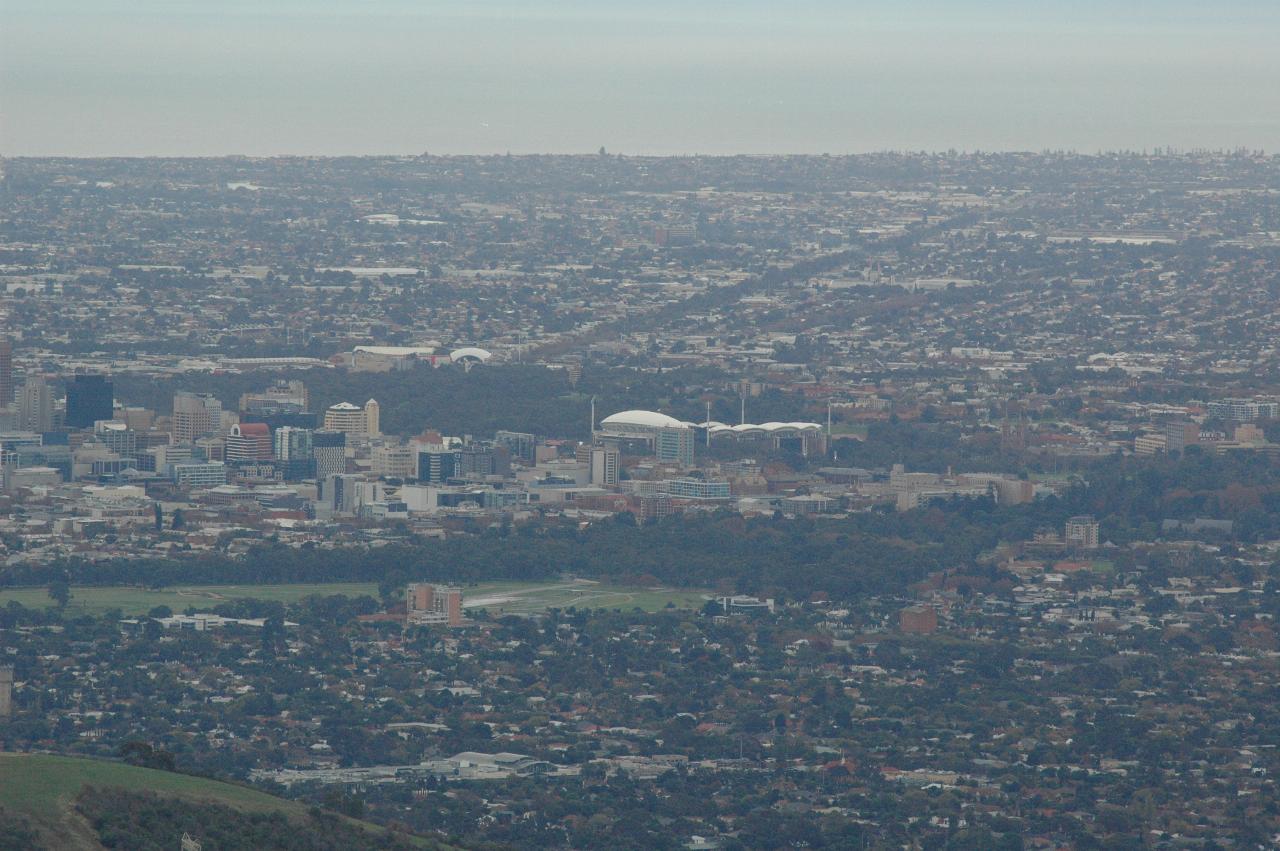
Another close up view of Adelaide CBD, but only the northern section, but including the new Adelaide Oval. It also show Port Road, heading to the north west of the CBD which, surprise, is where the Port of Adelaide is located!
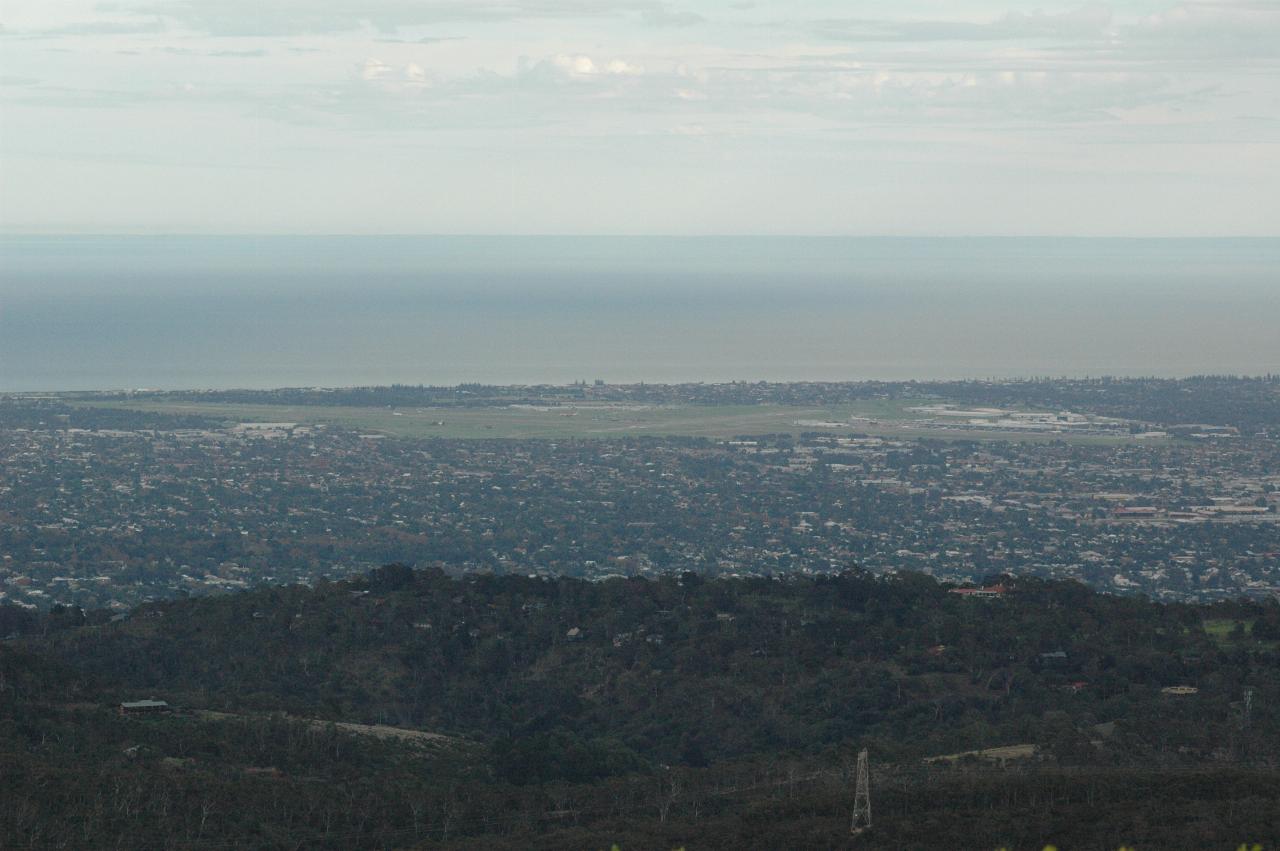
Adelaide Airport is the large grassy area, close to the Gulf of St. Vincent.
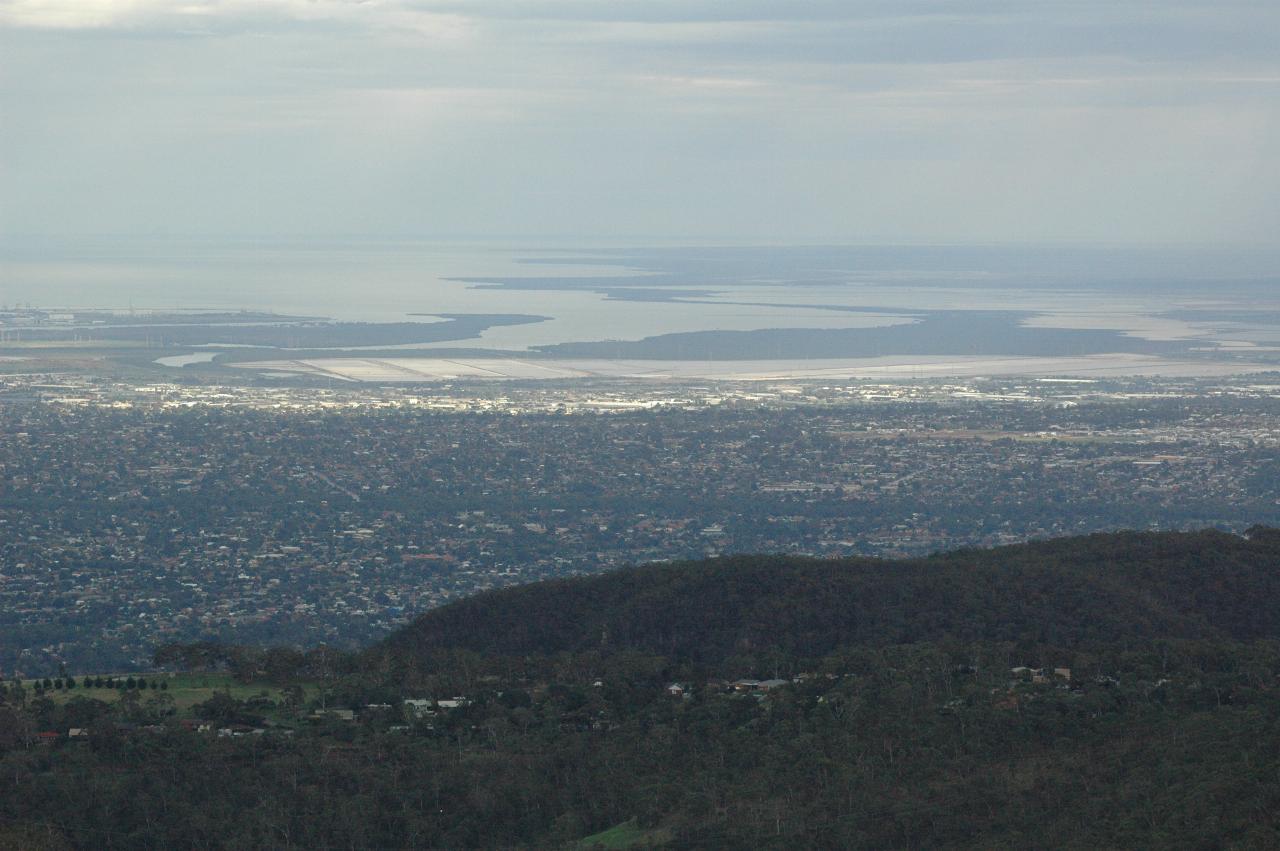
Barker Inlet, which is the location of the Port of Adelaide, to the north west of the CBD.
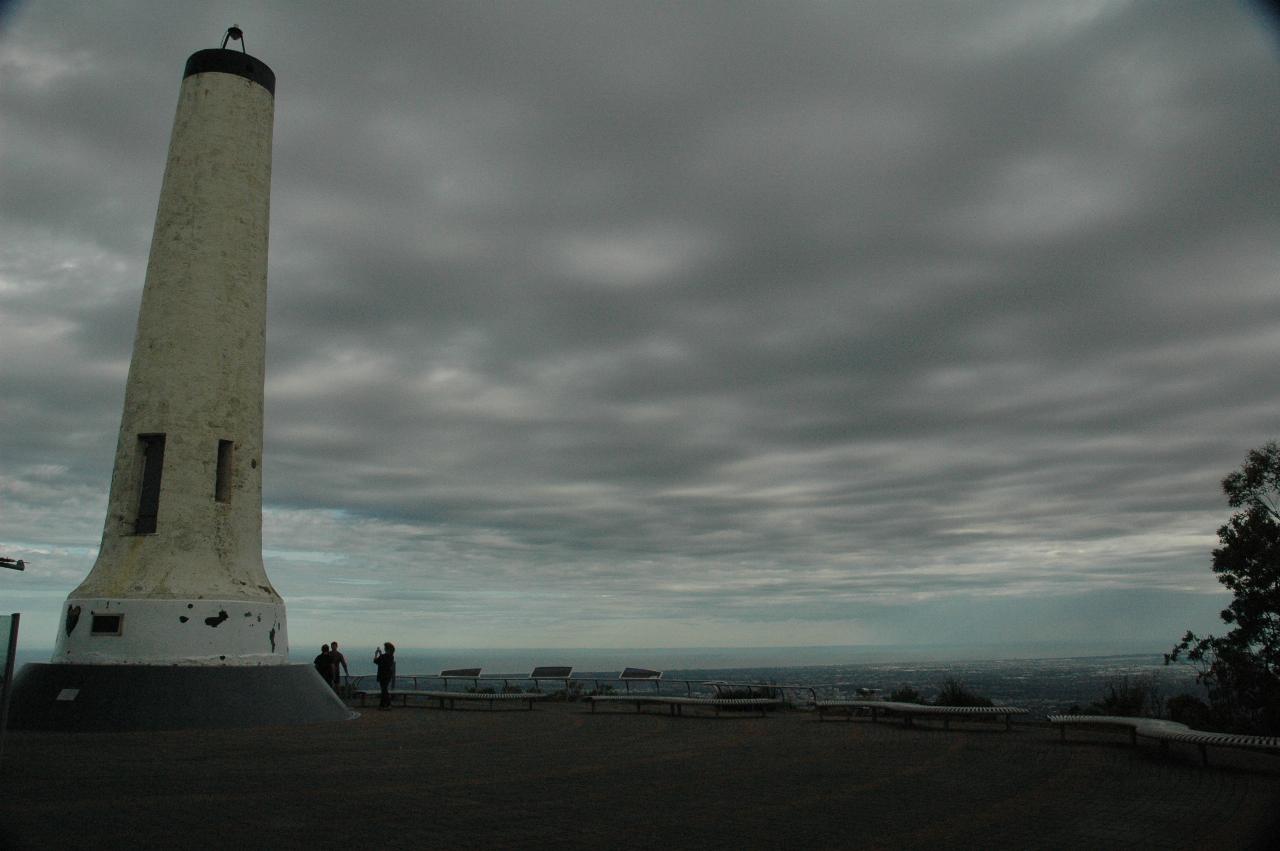
The white column is in honour of Matthew Flinders. The dedication is
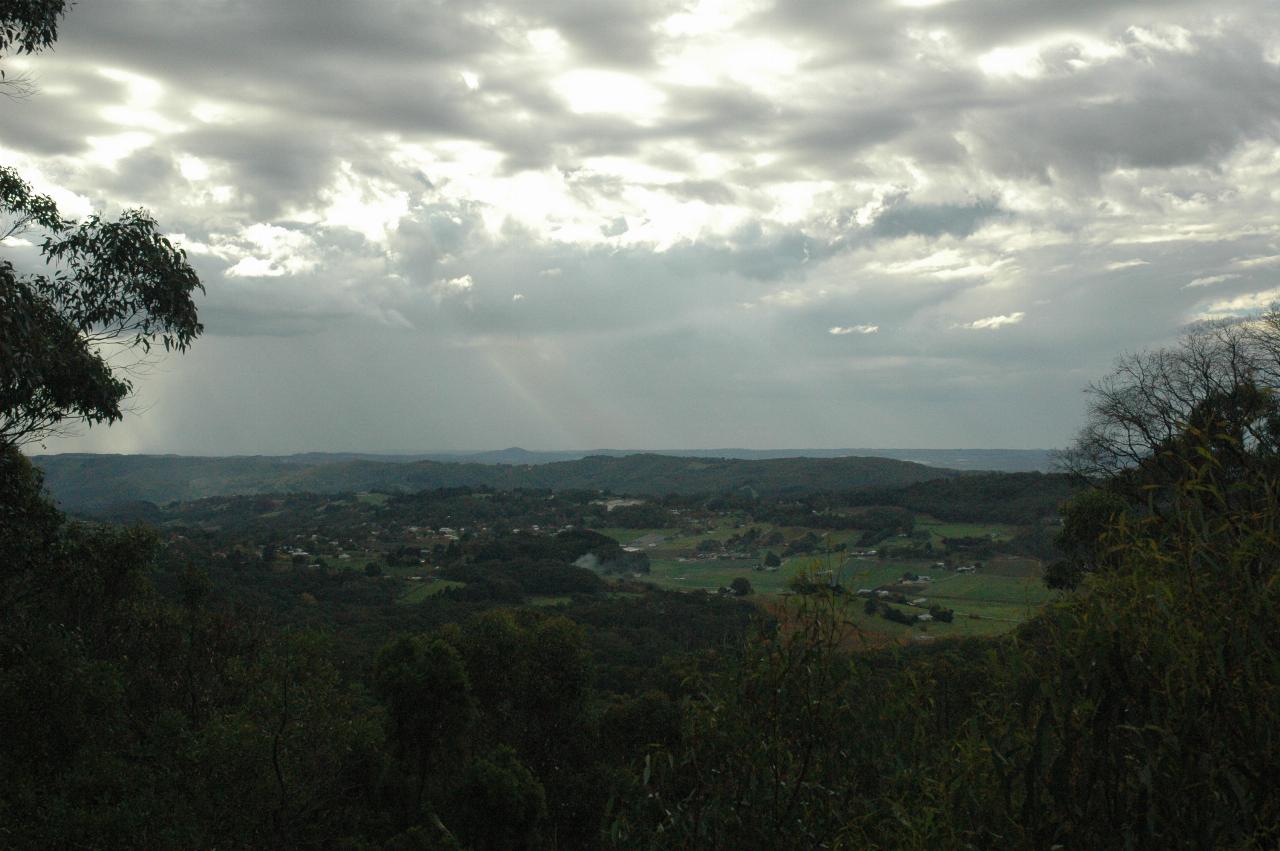
Vegetable and grape growers were soon attracted to the rich soil and well-watered valley. After the land was cleared market gardens were established in the 1840s. Piccadilly Valley was a closely-settled community by 1880.
In 1883 journalist E. H. Hallack toured Piccadilly Valley. He noted the excellent soil and abundant spring water. He remarked the protection from wind and frost provided by the surrounding hills. One plot could yield two crops of potatoes and one of green feed in a season. Flowers also did well.
Until the 1970s winegrowing had not been a success. This was partly due to the relatively cool climate and high humidity. But some vignerones believed that particular varieties should do well, and planted vines in Piccadilly Valley. In 1986 Petaluma Wines released a sparkling Chardonnay. This marked the revival of the wine industry in the Adelaide Hills.
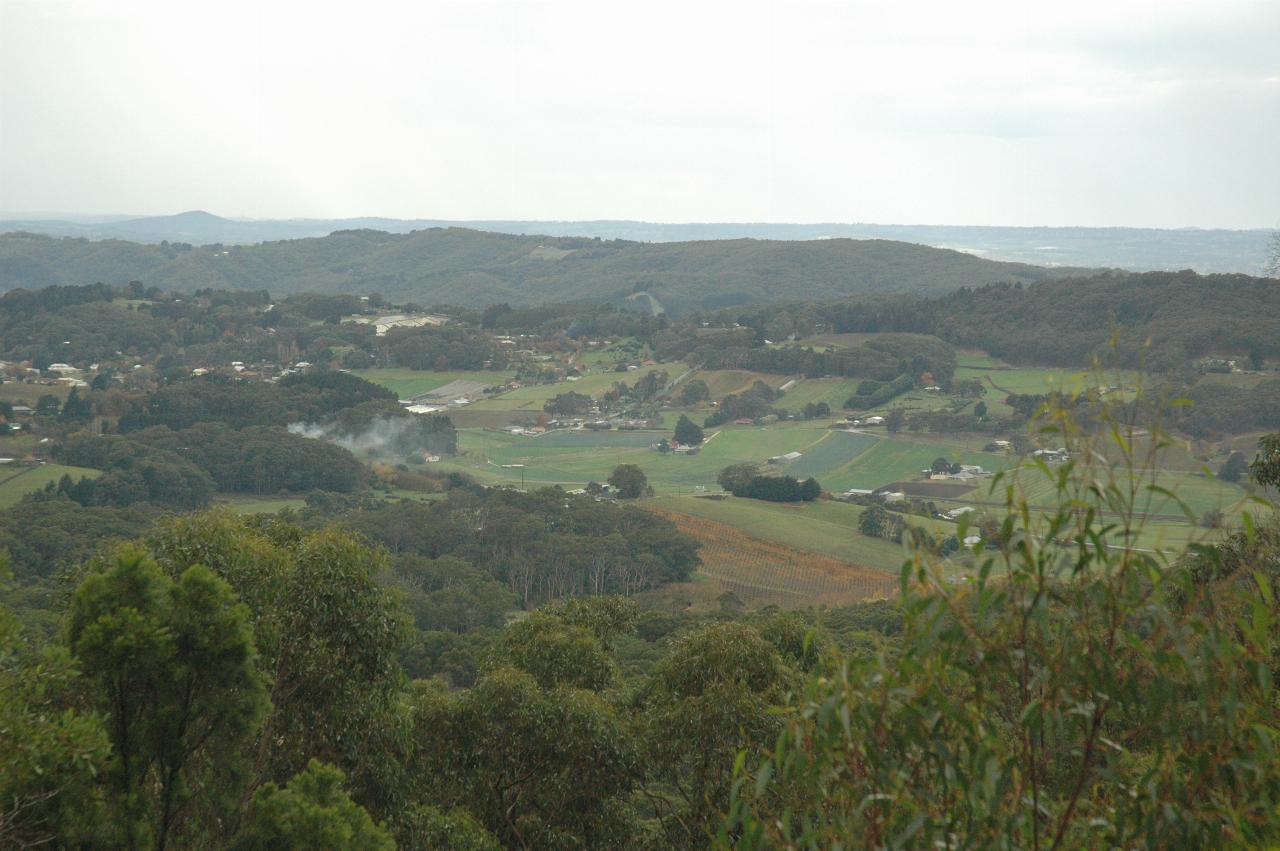
A better view of the cultivated part of the valley.